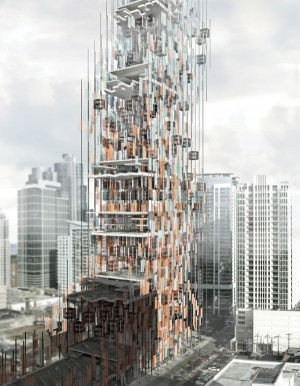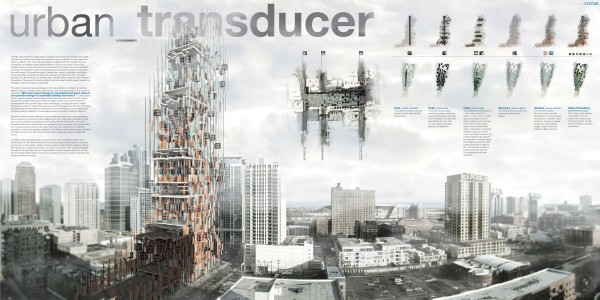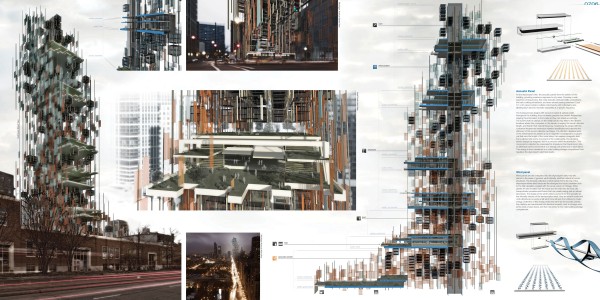designed by Ryan Browne, Nathanael Dunn, Daniel Nelson, Benjamin Scholten
United States
One of the most prevalent forms of pollution in cities comes from noise, a pollutant often overlooked and rarely considered harmful. Sound in its simplest sense is energy, which is not lost to nothingness upon absorption, but is transformed into new energy. This resultant energy is usually heat, which is potentially contributing to the rising issue of global warming. As population and noise productions continue to increase, so will the amount of resultant heat, which will increase the Earth’s average temperature.
The Urban Transducer takes advantage of city noise pollution in Chicago by capturing airborne sound and converting it into usable energy. Why lose sound energy to unwanted heat gains when it can provide energy for essential building functions? In order to capture the maximum amount of energy from noise, the screen system uses acoustic panels that are adjusted to react to specific wavelengths of present frequencies. The Urban Transducer also has the ability to remember the most commonly occurring frequencies and their locations, allowing it to preemptively adjust in order to produce maximum efficiency.
Beyond the idea of energy collection, sound inspired the form of the Urban Transducer. When produced, sound is pure and unaltered in its form, but human perception of that pure sound is distorted and warped through its interaction with the environment. The Urban Transducer reflects this relationship in its appearance; it is composed of six hubs and numerous pods around its core—all of which are pure, simple forms. A viewer’s perception of these components is altered by the exterior screen systems that obscure them, thus distorting their pure nature visually, as happens audibly with sound.
In addition to its sustainable ideas using sound, the Urban Transducer utilizes wind forces to produce energy for the building. Integrated among the acoustic panels, similarly composed wind panels contain miniature turbines that harness any available wind power. They are integrated throughout the skyscraper but are concentrated in areas of greatest efficiency: on the top of the tower, along the train tracks, and above the roads.

















